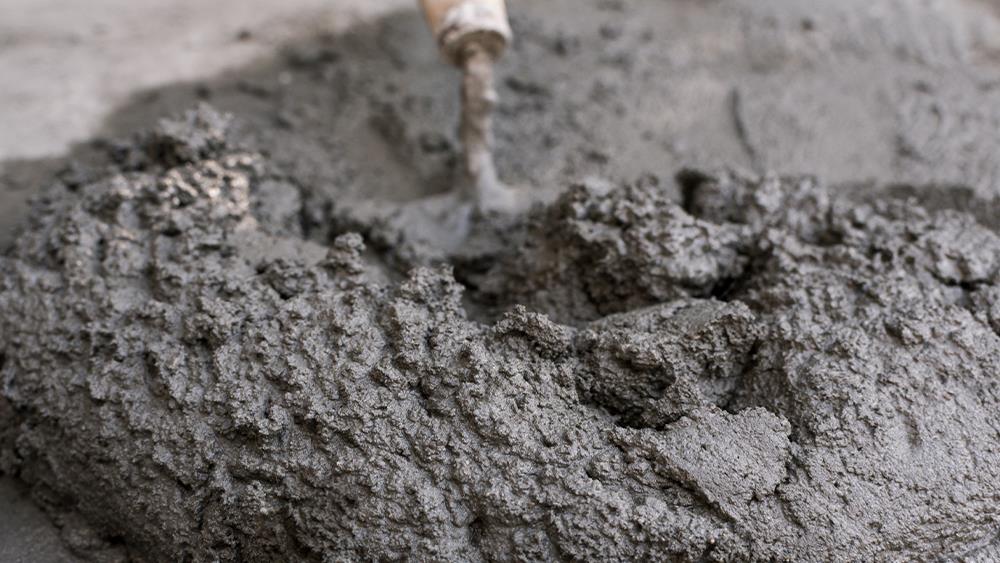

Paul Lees, Head of Commercial at Tarmac, takes a quick look at some of the most common issues that tend to crop up and how your customers can identify any issues before they escalate.
We’re getting to that time of year – summer (or what little we saw of it) is behind us and, as autumn approaches, homeowners will start thinking about those repair, maintenance and improvement tasks before the arrival of harsher weather.
So, what advice can merchants be offering to customers to support this?
Fence posts
The colder months often bring higher wind speeds, which means now is the ideal time for your customers to check for any damage that may have occurred during this time. If fence posts are unstable then they need to be reset with a quick setting, no mix concrete product, such as Blue Circle Postcrete. This can be used for fixing wooden, concrete and metal posts.
As a general rule, around 25% of the post should be buried below ground. Then simply fill the hole one third with clean water and pour in Blue Circle Postcrete evenly around the post until dry powder is visible on the surface. The Postcrete will set in as little as ten minutes.
Exterior brickwork
Elsewhere, homeowners should look out for any areas of brickwork where mortar is missing or where it is loose and crumbly. These areas should be repaired by raking out the joint and re-pointing with a suitable mortar. A general purpose mortar is normally suitable for most houses and pre-mixed, bagged products are readily available.
A mortar containing hydrated lime as well as cement (such as Blue Circle Quality Assured Mortar) is more cohesive and flexible and can accommodate slight movements in the brickwork.
Your customers may also be checking ‘efflorescence’ on exterior brickwork and walls, which is the white chalky marks left when water leaves behind salt deposits on the masonry surface or when lime migrates from cement. This can appear over years and repointing the mortar will help. Your customer should start by cleaning the face of brickwork with a mild acid or brick cleaner and then repoint with mortar such as Tarmac Blue Circle Quality Assured Mortar.
The guaranteed mix proportions of a ready to use mortar help overcome many potential problems relating to site mixing. These include the use of excess water and the addition of other inappropriate materials, which can result in reduced strength, increased permeability and reduced durability of the hardened mortar.
Repairing damaged concrete paths
Another important job is to repair any damaged concrete paths. It is not uncommon for homeowners to find unpleasant surface cracks or spalling after the summer months but with good preparation, your customers can make repairs simply and efficiently.
Once the damaged area has been identified and prepared and damped, they should use a dry quick repair mix, such as Tarmac Blue Circle Quick Repair Concrete if less than 50mm, or Tarmac Blue Circle Extra Rapid Cement used with a sharp sand or 10mm ballast for larger repairs.
Using a straight-edged tool they then need to spread and level the cement before sprinkling the area with clean water. Suggest using a watering can with a rose attachment so excessive water doesn’t pond on the surface. They should then use their straight edge again to compact and smooth the concrete, then leave to set for thirty minutes. After two hours they can then give it a final sprinkling of water.
A fast-setting cement is ideal for these types of applications since it sets quickly after placing and gains walk-on strength within the same day.
Guttering
Finally, another essential check should be to review gutters and down-pipes for leakage, as water leaking onto brickwork walls for prolonged periods of time can cause leaching of soluble salts from the bricks and mortar and resulting in white staining. In extreme circumstances the bricks may become saturated with water which can freeze in the winter and ‘blow’ the face off the brick. Prevention is always better than cure and fixing the odd leak in a pipe is much simpler (and less costly) than repairing whole areas of brickwork.